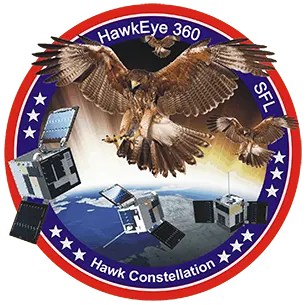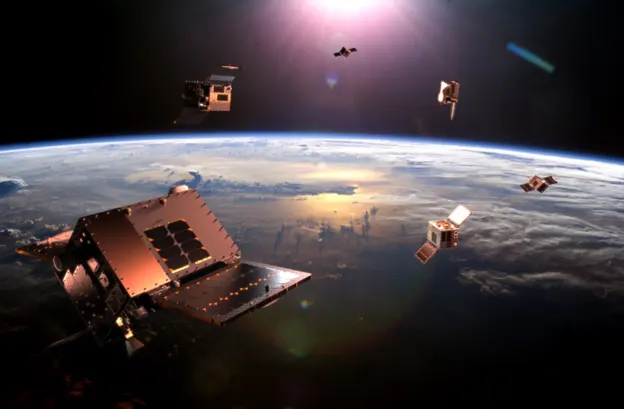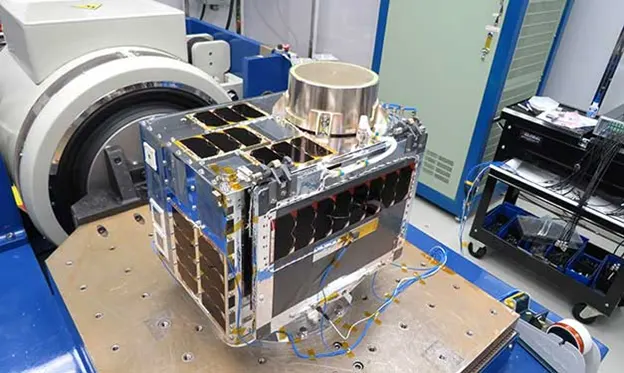HawkEye 360 Constellation
World’s first commercial satellite constellation for radio frequency (RF) signal intelligence



The HawkEye 360 Constellation detects and geolocates RF signals for maritime situational awareness, emergency response, national security, and spectrum analysis applications. HawkEye 360 is the first to use formation-flying microsatellites for terrestrial RF signal detection. This data is analyzed for many commercial applications including maritime situational awareness, emergency response, national security, and spectrum mapping.
SFL was selected in 2018 to develop and launch the three-satellite HawkEye 360 Pathfinder Cluster to demonstrate small satellite capabilities for geolocation of VHF, emergency position-indicating radio beacon (EPIRB), automatic identification system (AIS) and marine radar signals.
Because successful RF geolocation depends on formation flying by multiple satellites, SFL’s expertise with advanced attitude and formation control software and hardware was a crucial part of the project. SFL’s commercially affordable technology enables superior pointing accuracy and targeting along with precise positioning. The technology is critical for the application since the relative position of each satellite in the constellation must be controlled and known accurately to geolocate the transmission sources of the RF signals.
After the Pathfinder mission, SFL built Clusters 2, 3, 4, 5, and 6 on its space-proven 30-kg DEFIANT microsatellite bus. On 15 April 2023, the organizations celebrated the launch and deployment of Cluster 7, the first three satellites integrated in-house by HawkEye 360 as part of the production plan created by SFL to facilitate the economics of NewSpace business models. Flex Production gives SFL clients the option of having satellites built at SFL’s Toronto headquarters or setting up in-house production capabilities at their own facilities with guidance from SFL.
Launched on 7 April 2024, Cluster 8 was integrated by HawkEye 360 at its own plant in Virginia. Also launched on 7 April 2024, Cluster 9 represented the next evolution and included updated payload and platform features. SFL handled the entire process, including development, integration, and testing, at its Toronto facility. The first nine clusters continue to operate successfully in orbit.
HawkEye 360 Cluster 10 was integrated at HawkEye 360’s Virginia plant with technical guidance from SFL and successfully launched and deployed in orbit on 16 August 2024. Cluster 10 brings to 30 the total number of radio frequency geolocation microsatellites operated by HawkEye 360. Cluster 12 will incorporate technology updates and be integrated by SFL, while Clusters 11 and 13, now in development, will be integrated by HawkEye 360 in Virginia.
Each new cluster expands HawkEye 360’s global revisit and collection capacity, which is key to monitoring global activities and supporting timely defense, national security, and commercial applications.
The HawkEye 360 Constellation is a prime example of how SFL leverages its innovative technology and decades of experience to create low-cost, high-performance small satellites.

